Bengal Tiger Painting Wall Art & Canvas Prints
Bengal Tiger Painting Wall Art & Canvas Prints
Couldn't load pickup availability
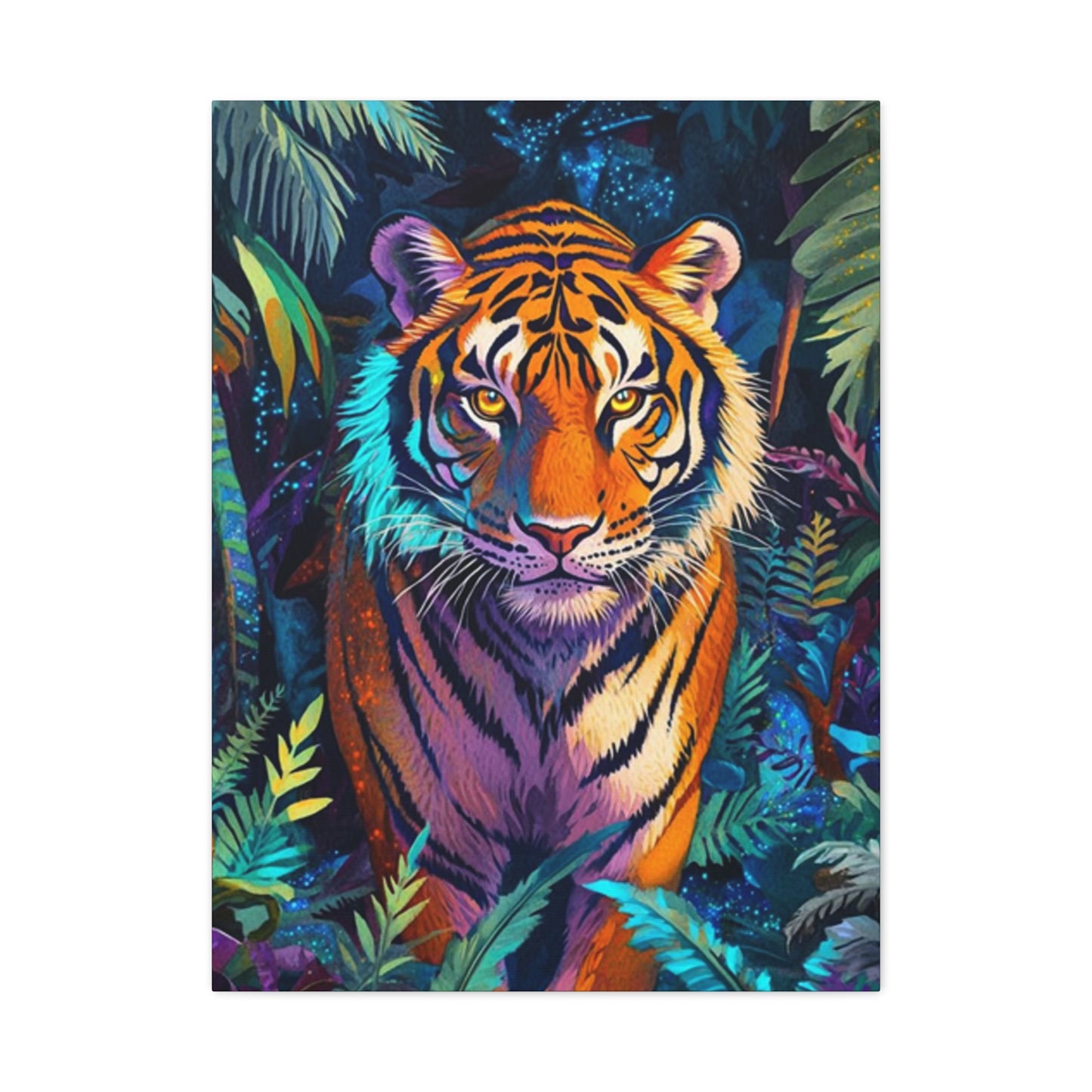

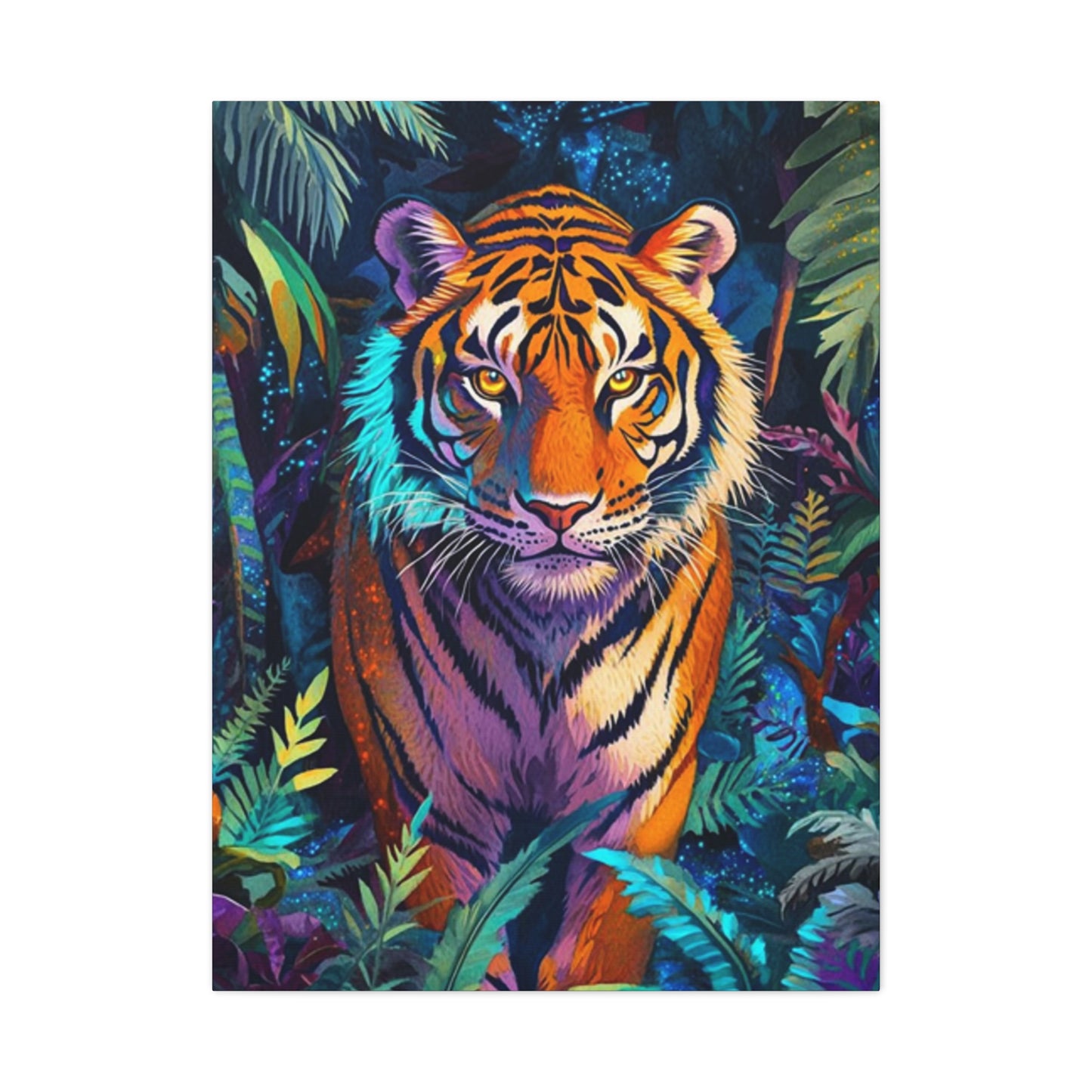

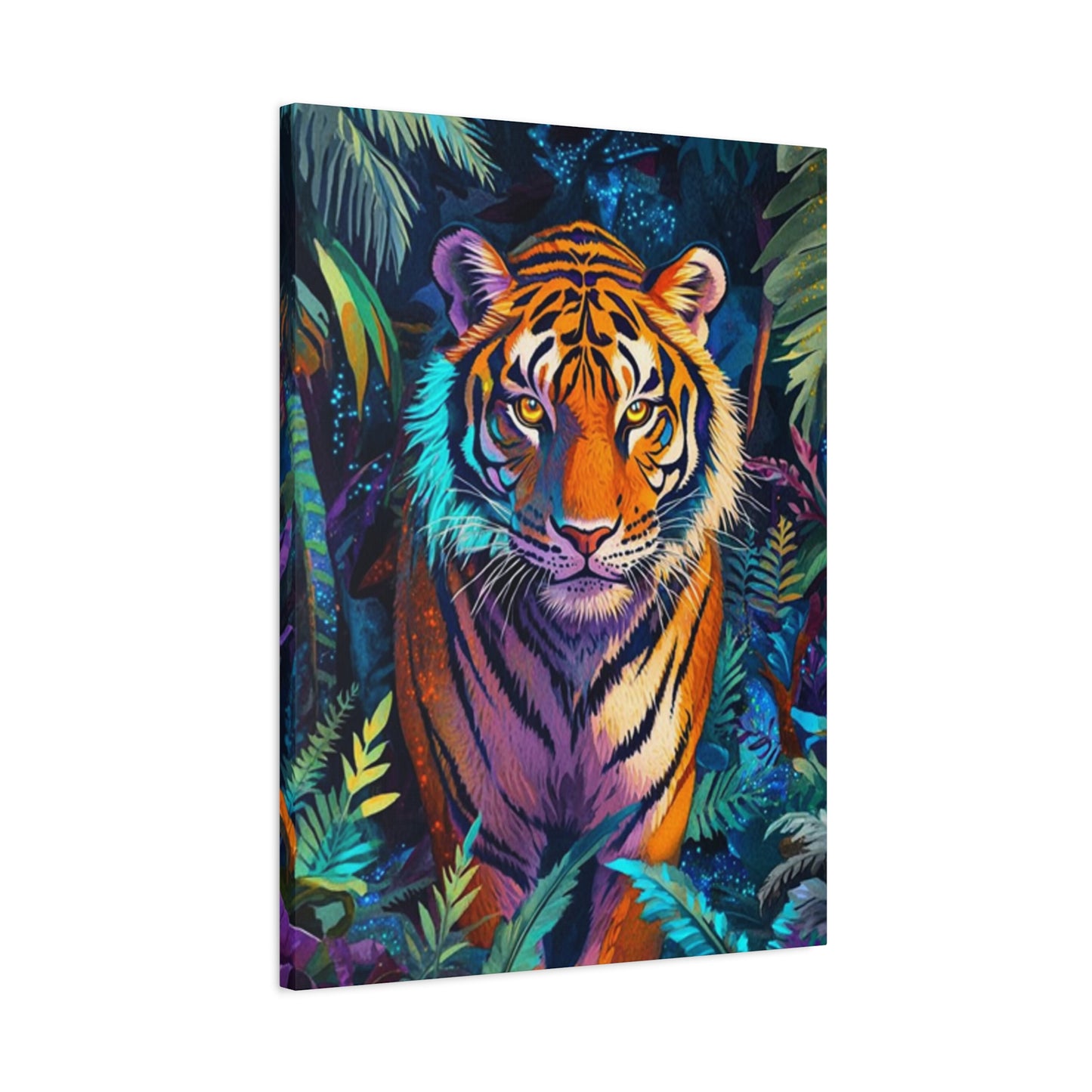
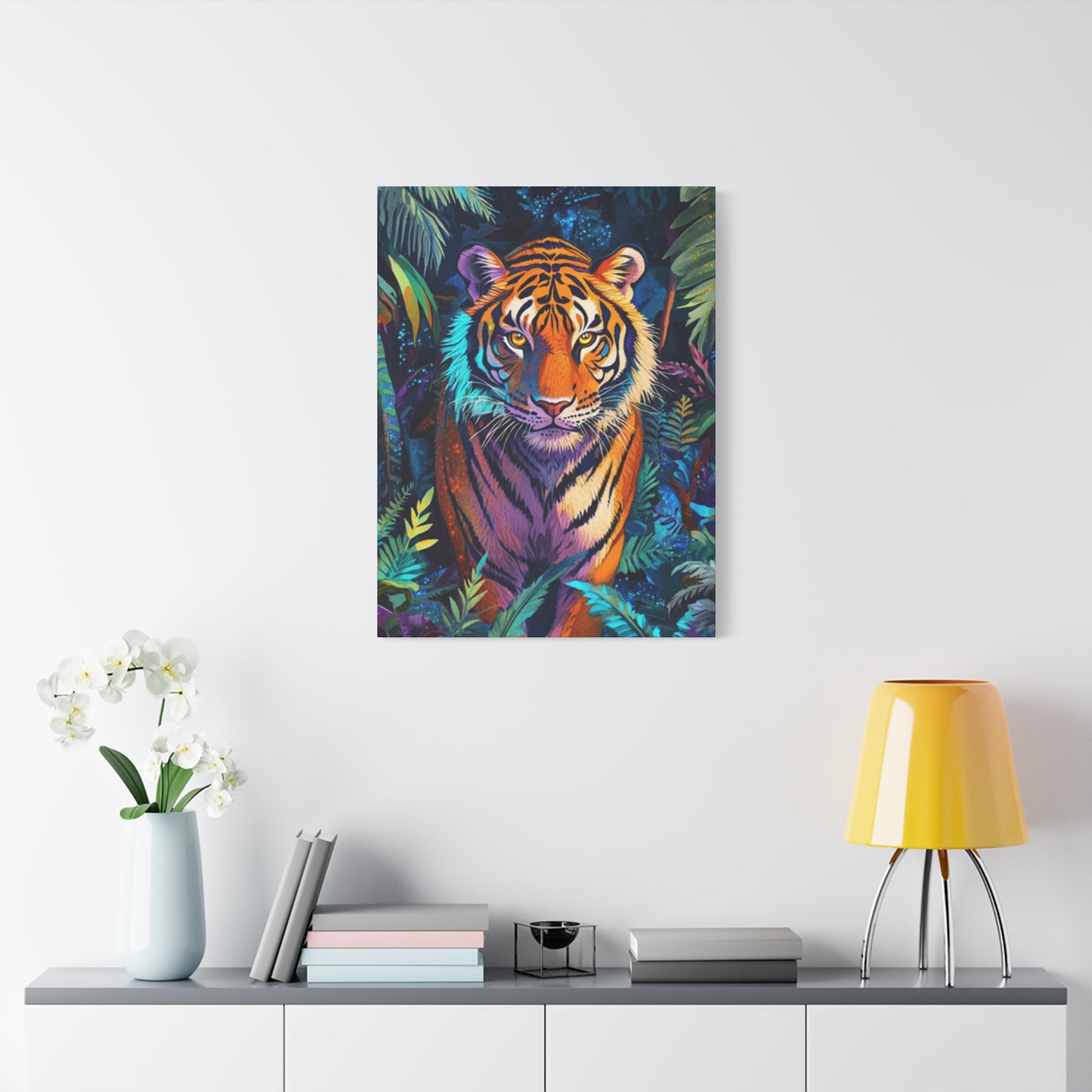
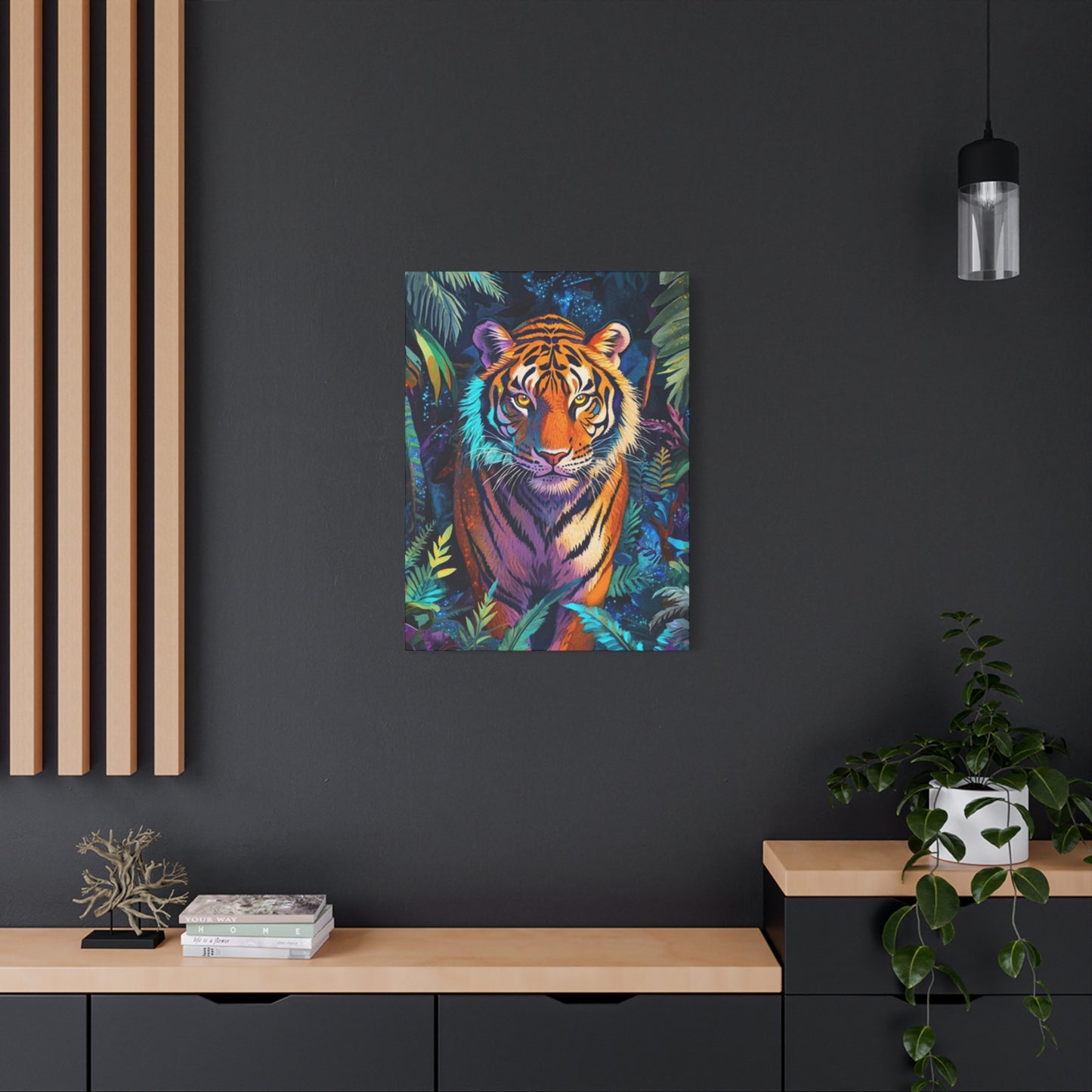
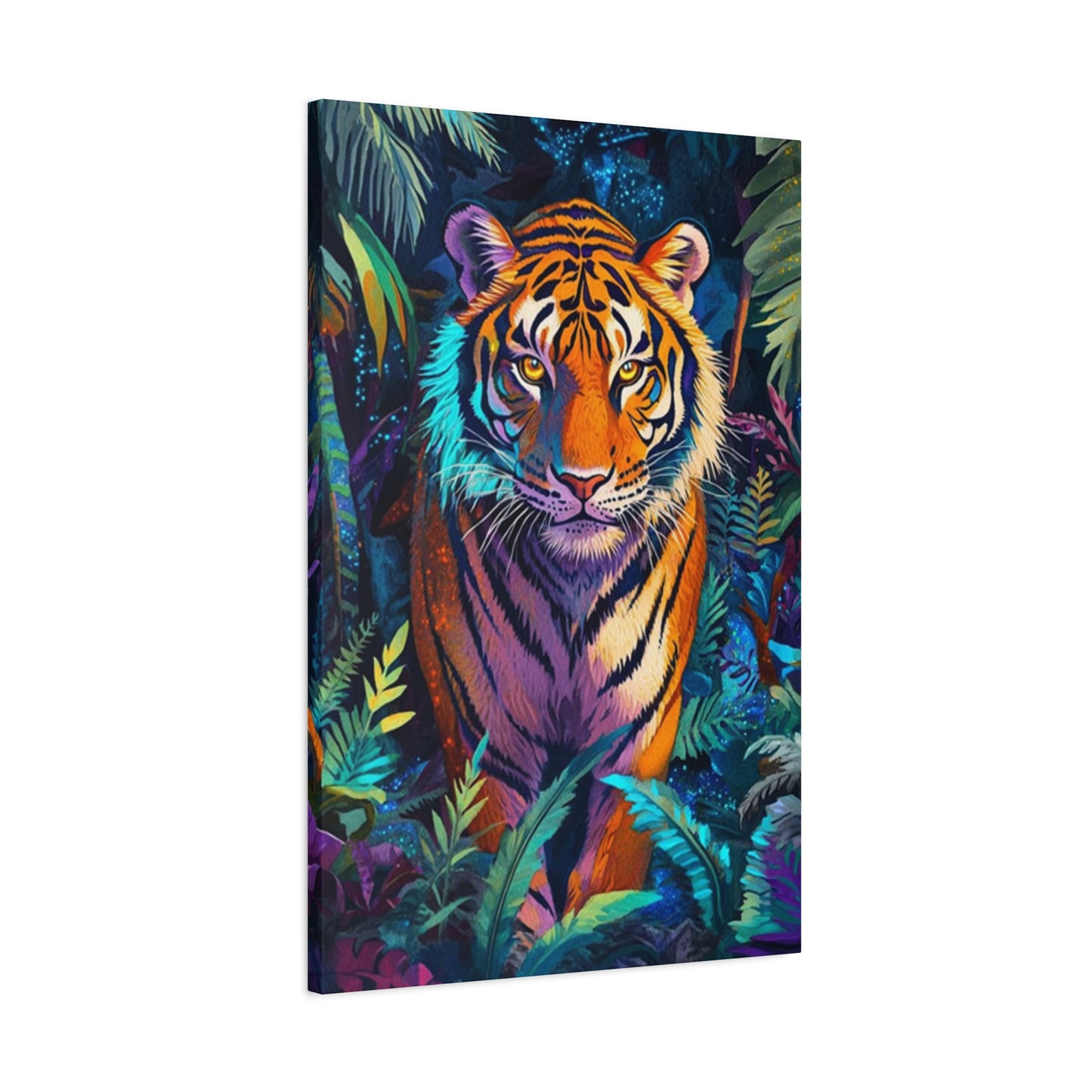
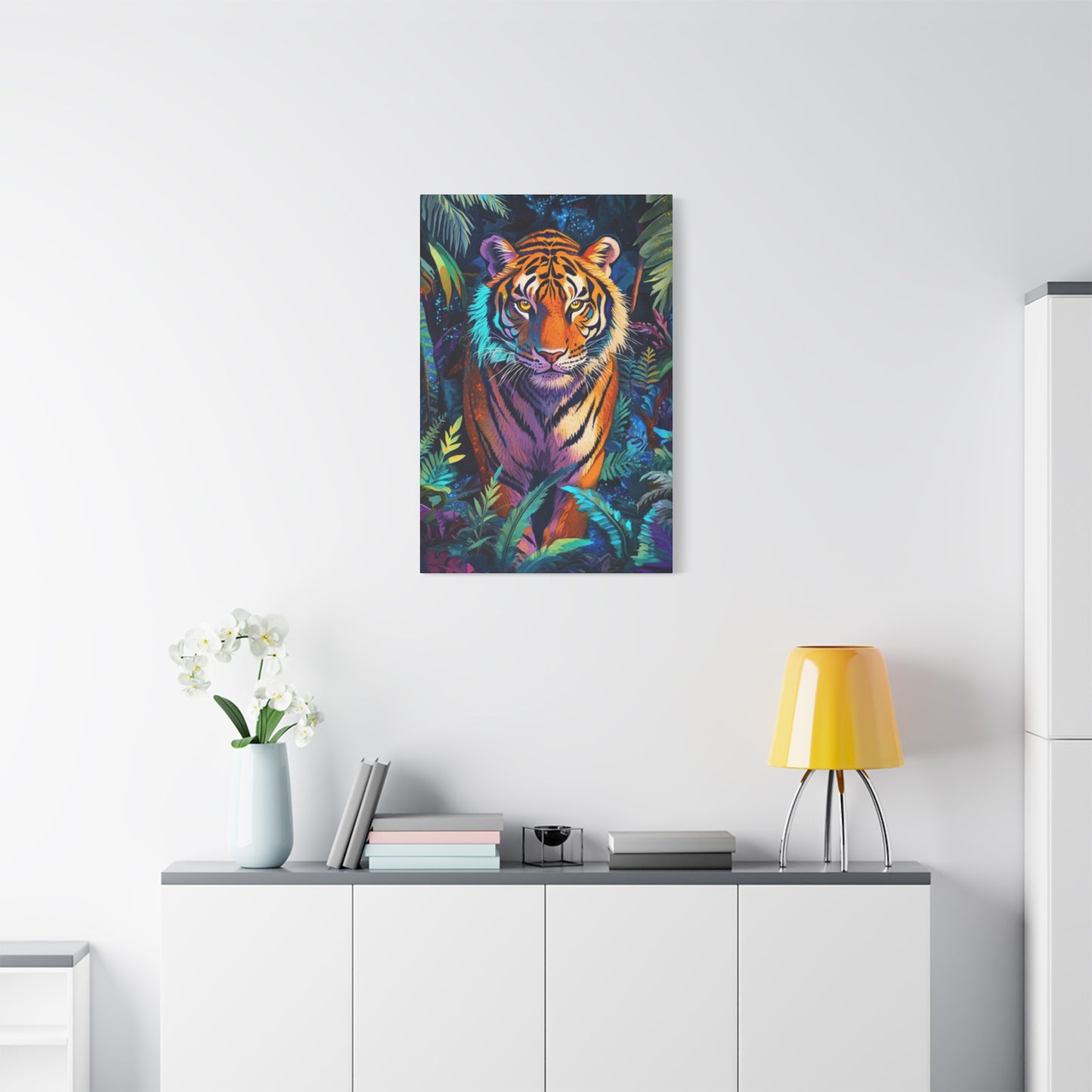
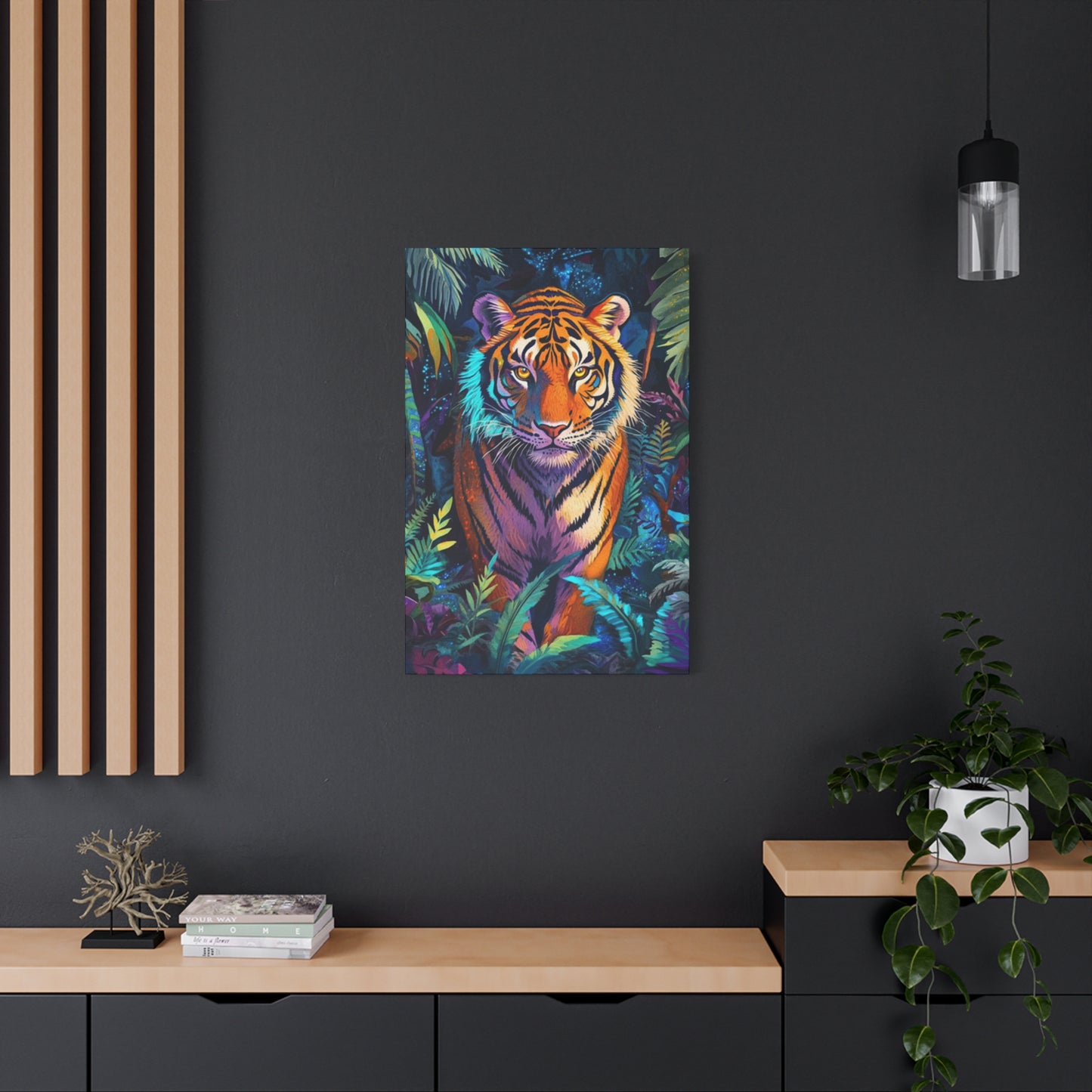


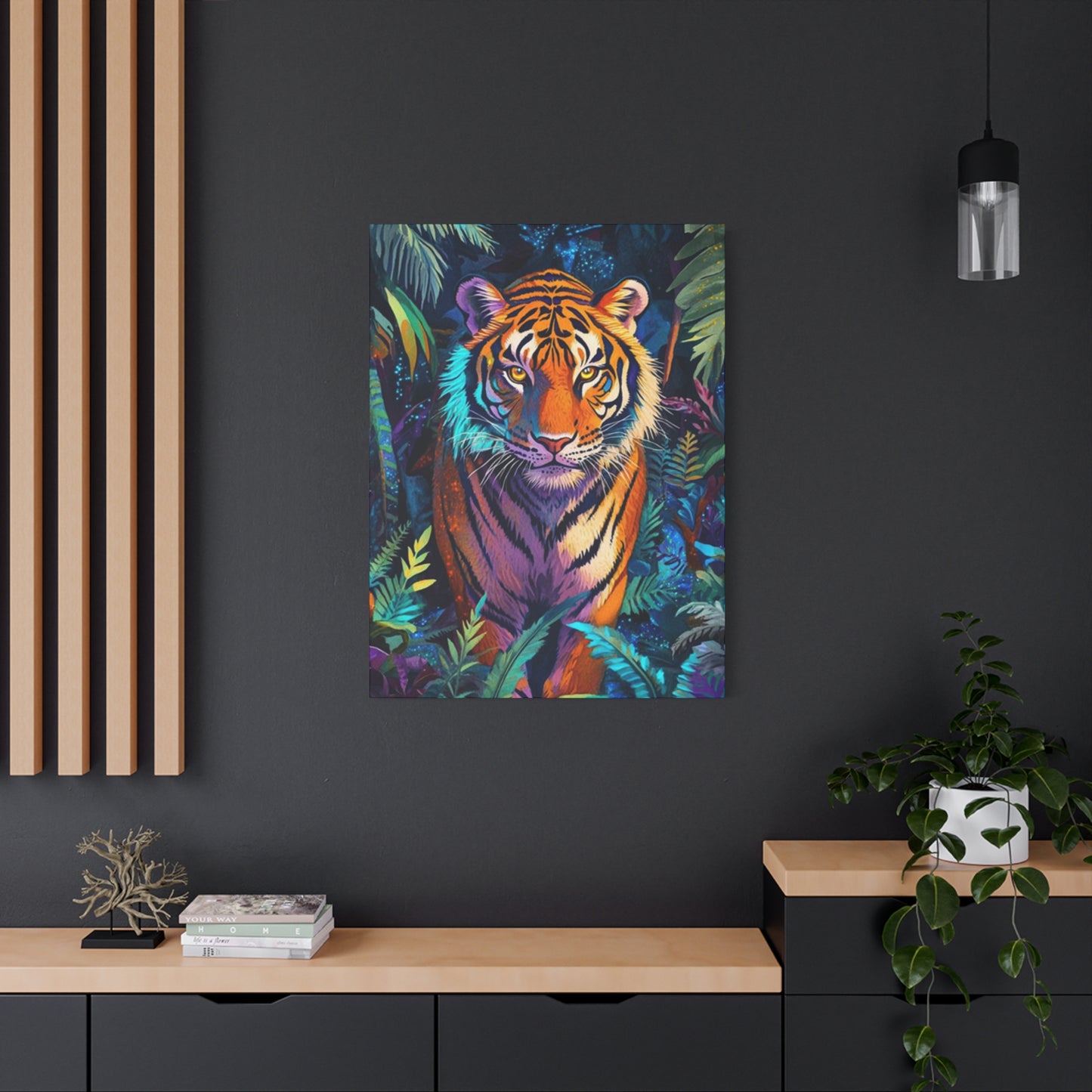

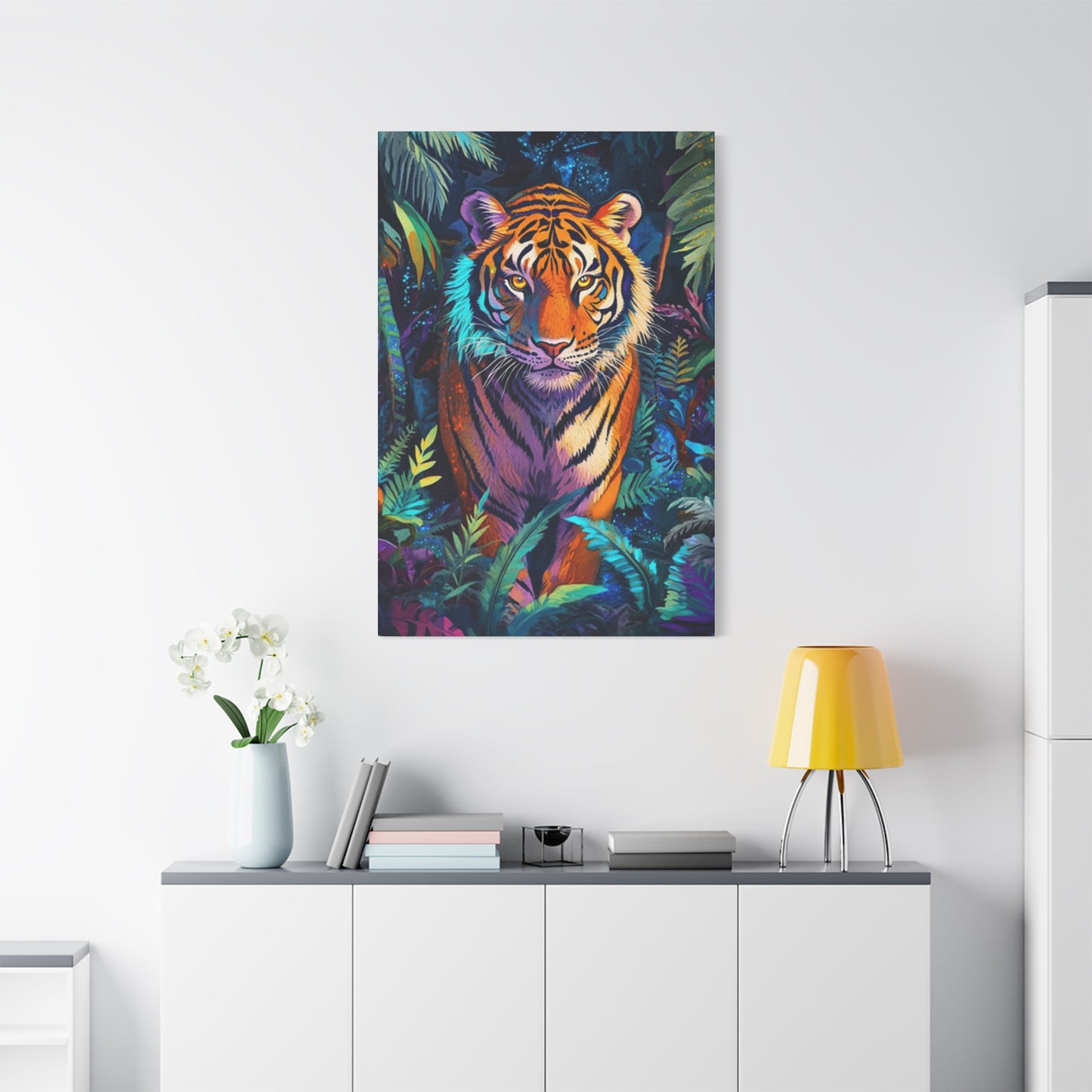
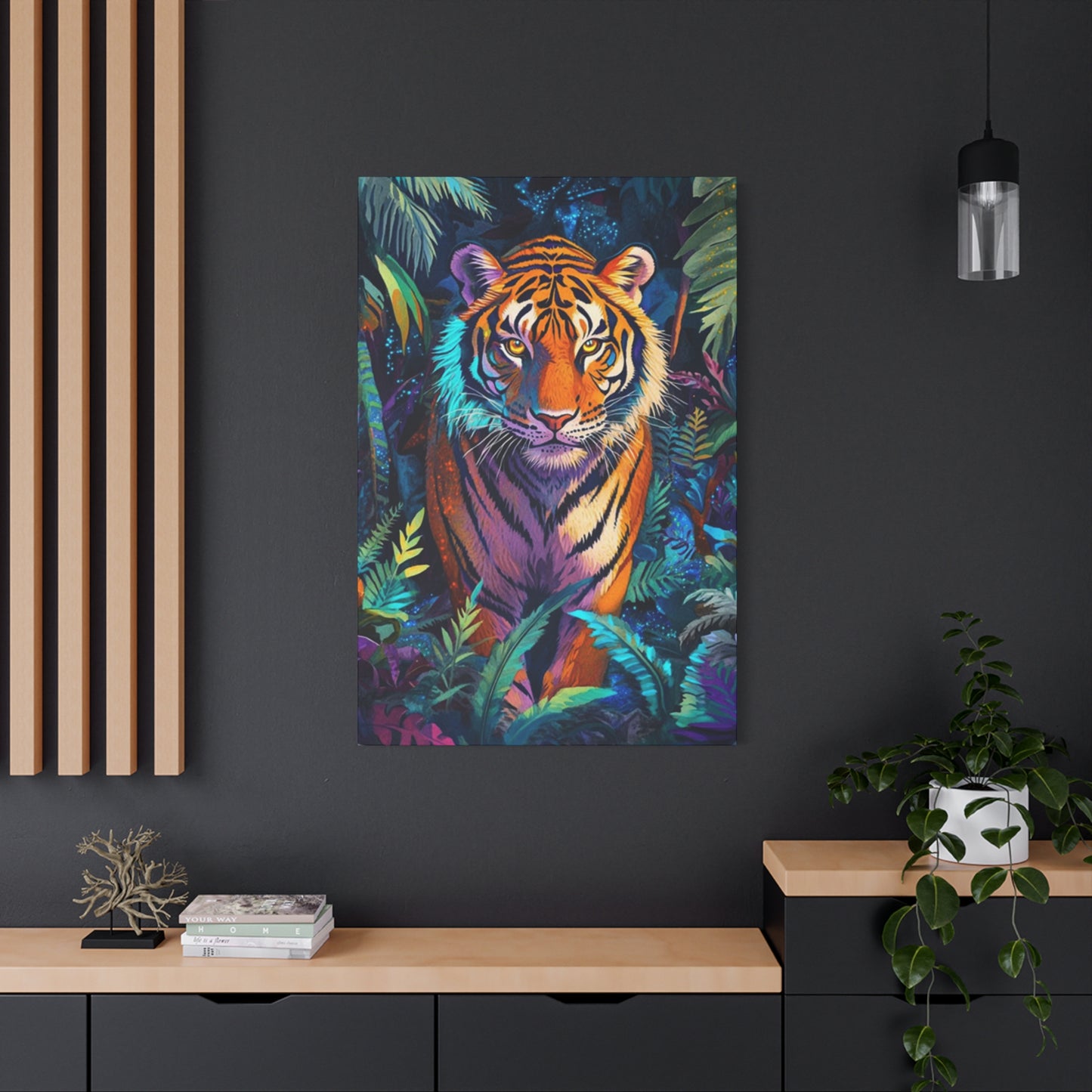
Bengal Tiger Wall Art: Magnificent Wildlife Masterpieces for Modern Homes
Bengal tigers represent one of nature's most magnificent creatures, and their portrayal in artistic expressions has captivated audiences worldwide for centuries. These powerful felines, with their distinctive orange coats adorned with bold black stripes, embody strength, grace, and untamed wilderness that translates beautifully into visual art forms. Contemporary artists continue to draw inspiration from these extraordinary animals, creating stunning pieces that bring the raw beauty of the wild into modern living spaces.
The artistic interpretation of Bengal tigers goes beyond mere representation; it captures the essence of their character, the intensity of their gaze, and the fluid power of their movements. Artists employ various techniques to showcase these magnificent creatures, from hyperrealistic oil paintings that capture every whisker and stripe detail to abstract interpretations that focus on the emotional impact and spiritual significance of these apex predators.
In today's art market, Bengal tiger artwork has gained tremendous popularity among collectors and interior designers alike. The appeal lies not only in the visual impact these pieces create but also in their ability to evoke feelings of adventure, strength, and connection to the natural world. Whether rendered in traditional mediums like oil and acrylic or created through digital art techniques, Bengal tiger art continues to evolve while maintaining its timeless appeal.
The cultural significance of tigers in art cannot be understated. Throughout history, various civilizations have revered tigers as symbols of power, courage, and protection. This rich cultural heritage adds depth and meaning to contemporary tiger art, making each piece not just a decorative element but a conversation starter that carries historical and spiritual weight.
Modern artists approach Bengal tiger art with fresh perspectives, incorporating contemporary artistic movements while respecting the traditional reverence for these magnificent animals. From photorealistic portraits that showcase individual personality traits to impressionistic works that capture the tiger's essence through bold brushstrokes and vibrant colors, the diversity of artistic styles available ensures that there's a perfect piece for every taste and interior design scheme.
The technical challenges of creating Bengal tiger art push artists to develop exceptional skills in rendering fur textures, capturing the play of light on striped patterns, and conveying the intense emotional presence that these animals possess. Master artists spend years perfecting their techniques to accurately portray the complex interplay of colors, shadows, and highlights that make Bengal tiger fur so visually striking.
Designing Your Living Space with Striking Bengal Tiger Wall Art
Incorporating Bengal tiger wall art into your home decor requires thoughtful consideration of color schemes, room proportions, and overall design aesthetic. These powerful artworks can serve as stunning focal points that anchor entire room designs, or they can complement existing decor elements to create cohesive and visually appealing spaces.
When selecting Bengal tiger art for your living room, consider the size and scale of both the artwork and the wall space available. Large-scale pieces work exceptionally well above sofas or mantlepieces, creating dramatic focal points that draw the eye and spark conversation. Smaller pieces can be grouped together to create gallery walls that tell a story about wildlife conservation or showcase different artistic interpretations of these magnificent creatures.
Color coordination plays a crucial role in successfully integrating Bengal tiger art into your existing decor. The natural orange and black coloration of Bengal tigers pairs beautifully with earth tones, creating warm and inviting atmospheres. Neutral backgrounds in beige, cream, or soft gray allow the vibrant colors of the tiger artwork to take center stage while maintaining overall design harmony.
For contemporary spaces with modern furniture and clean lines, consider Bengal tiger art that emphasizes geometric patterns or abstract interpretations. These pieces can bridge the gap between traditional wildlife art and modern design sensibilities, creating sophisticated looks that appeal to design-conscious homeowners.
Lighting considerations are essential when displaying Bengal tiger wall art. Proper illumination can enhance the visual impact of these pieces, bringing out the subtle details in fur textures and the intensity of the tiger's gaze. Track lighting, picture lights, or strategically placed accent lamps can transform good artwork into extraordinary design elements that command attention day and night.
The placement height of Bengal tiger art affects both visual impact and room proportions. Generally, artwork should be hung at eye level, with the center of the piece approximately 57-60 inches from the floor. However, in rooms with high ceilings or when creating gallery walls, these guidelines can be adjusted to achieve optimal visual balance.
Consider the emotional impact you want to create in each room when selecting Bengal tiger art. Fierce, intense portrayals work well in home offices or studies where you want to convey strength and determination. More serene or contemplative tiger images might be better suited for bedrooms or meditation spaces where calm energy is preferred.
Valuable Bengal Tiger Paintings for Dedicated Wildlife Art Collectors
The market for collectible Bengal tiger paintings has experienced significant growth as awareness of wildlife conservation issues increases and appreciation for fine art continues to expand. Serious collectors seek out pieces that demonstrate exceptional artistic skill, unique perspectives, and investment potential, making educated decisions based on artist reputation, artwork provenance, and market trends.
Established wildlife artists who specialize in Bengal tiger subjects often command premium prices for their original works. These artists typically have extensive backgrounds in zoological studies, field research, or conservation work, bringing authentic understanding and respect for their subjects that translates into compelling artistic expressions. Their paintings often feature meticulous attention to anatomical accuracy, behavioral authenticity, and environmental context that sets them apart from generic wildlife art.
Limited edition prints and signed reproductions offer collectors opportunities to own works by renowned artists at more accessible price points. These pieces often retain value well over time, especially when produced in small quantities with proper documentation and certificates of authenticity. Collectors should research edition sizes, printing techniques, and paper quality when considering these investments.
Emerging artists who show promise in wildlife art present exciting opportunities for collectors to acquire exceptional pieces before market recognition drives prices higher. Supporting these artists not only provides potential financial returns but also encourages the continuation of wildlife art traditions and conservation awareness through artistic expression.
Provenance documentation becomes increasingly important as Bengal tiger art gains collector interest. Proper documentation includes artist signatures, creation dates, exhibition history, and any awards or recognition the piece has received. This information not only supports current valuation but also becomes crucial for insurance purposes and future resale considerations.
Conservation themes in Bengal tiger art add another layer of collectible value. As awareness of endangered species protection grows, artworks that specifically address conservation issues or support wildlife protection organizations may appreciate more rapidly than purely decorative pieces. Collectors often find additional satisfaction in owning art that contributes to meaningful causes.
Storage and preservation considerations are essential for maintaining collectible value. Bengal tiger paintings require proper climate control, protection from direct sunlight, and professional conservation when necessary. Understanding these requirements helps collectors make informed decisions about acquisition, display, and long-term care of their investment pieces.
The international market for Bengal tiger art continues to expand, with collectors from various countries showing strong interest in these powerful works. This global appeal provides liquidity for collectors while also exposing artists to broader audiences and opportunities for career advancement.
Bengal Tiger Art: Masterful Fusion of Photorealism and Artistic Innovation
Contemporary Bengal tiger art represents a fascinating intersection where technical precision meets creative interpretation. Artists working in this genre face the dual challenge of accurately representing one of nature's most complex and beautiful creatures while also infusing their work with personal vision and artistic innovation.
Photorealistic approaches to Bengal tiger art demand exceptional technical skills and deep understanding of feline anatomy, fur patterns, and behavioral characteristics. Artists who pursue this style often spend months or years perfecting a single piece, meticulously rendering each stripe, whisker, and reflection in the animal's eyes. This dedication to accuracy serves both artistic and educational purposes, helping viewers appreciate the incredible complexity and beauty of these endangered animals.
The transition from photorealism to stylized interpretation offers artists opportunities to explore emotional and symbolic content while maintaining recognizable Bengal tiger characteristics. Semi-realistic styles might emphasize certain features like the intensity of the tiger's gaze or the fluid power of its movement, using selective focus and enhanced color saturation to create emotional impact beyond what pure realism might achieve.
Abstract interpretations of Bengal tigers push artistic boundaries while retaining essential elements that maintain connection to the subject. These works might focus on the pattern language of tiger stripes, translating them into geometric compositions that suggest the animal's presence without literal representation. Color field paintings might capture the emotional essence of encountering a Bengal tiger through pure color relationships and compositional dynamics.
Mixed media approaches combine various artistic techniques and materials to create unique textural and visual effects. Artists might incorporate elements like gold leaf to suggest the tiger's regal nature, or use collage techniques that layer different materials to build complex surface treatments that enhance the work's visual and tactile appeal.
Digital art techniques have opened new possibilities for Bengal tiger art creation and reproduction. Digital artists can achieve effects impossible with traditional media, such as seamless color transitions, complex layering effects, and precise detail work that rivals traditional painting techniques. These tools also facilitate easier reproduction and distribution of artwork, making Bengal tiger art more accessible to wider audiences.
The fusion of traditional and contemporary techniques often produces the most compelling Bengal tiger art. Artists might begin with traditional sketching and painting methods, then enhance their work with digital techniques or mixed media elements. This hybrid approach allows for both the authenticity of traditional artmaking and the expanded possibilities that modern tools provide.
Experimental techniques continue to push Bengal tiger art into new territories. Some artists explore unconventional materials like metal, glass, or fabric to create three-dimensional works that engage viewers differently than traditional flat artworks. These innovative approaches help ensure that Bengal tiger art remains fresh and relevant for contemporary audiences.
Exclusive Limited Edition Bengal Tiger Wall Art Collections
The market for limited edition Bengal tiger wall art has become increasingly sophisticated, with collectors and interior designers recognizing the value of owning pieces that combine artistic excellence with exclusivity. These collections often represent the finest work of established artists, produced in carefully controlled quantities that enhance both aesthetic and investment value.
Master printers working with renowned wildlife artists employ advanced techniques to ensure that limited edition Bengal tiger prints maintain the color accuracy, detail resolution, and longevity that collectors expect. Giclée printing on archival papers or canvas, using pigment-based inks that resist fading, has become the standard for high-quality limited editions. These technical specifications ensure that prints will maintain their visual impact for decades when properly cared for.
Numbering and signing protocols for limited edition Bengal tiger art follow established art market conventions. Each piece in an edition receives a unique number indicating its position within the total edition size, such as "15/250" for the fifteenth print in an edition of 250. Artist signatures, often accompanied by personal remarques or small original sketches, add authenticity and personal connection that collectors value.
Certificate documentation accompanying limited edition Bengal tiger art provides essential information about the artwork, artist, printing process, and edition details. These documents serve as proof of authenticity and provide information necessary for insurance coverage and potential resale. Reputable publishers maintain detailed records of edition sales and can verify authenticity if questions arise.
Publisher reputation significantly impacts the value and collectibility of limited edition Bengal tiger art. Established publishers with track records of working with prominent artists and maintaining high production standards command higher prices and provide greater confidence for collectors. These publishers often have extensive distribution networks and marketing capabilities that support long-term value appreciation.
Artist proof copies, typically comprising 10-15% of the total edition size, are reserved for the artist and often command premium prices due to their rarity. These pieces, usually marked "A.P." or "Artist Proof," represent the artist's personal selection from the edition and may include small variations or enhancements that make them unique within the edition.
Secondary market activity for limited edition Bengal tiger art provides insight into long-term value trends and collector preferences. Auction results, gallery sales, and private transaction data help establish market values and identify artists whose work shows strong appreciation potential. Collectors who track these trends can make more informed acquisition decisions.
Special edition variations, such as canvas transfers, metal prints, or pieces with hand-applied elements, offer collectors opportunities to own unique versions of popular Bengal tiger images. These variations typically command higher prices than standard paper prints but provide distinctive display options and enhanced exclusivity.
Developing Wildlife-Inspired Interiors with Majestic Tiger Paintings
Creating wildlife-themed rooms centered around tiger paintings requires careful balance between dramatic impact and livable comfort. These powerful artworks can transform ordinary spaces into extraordinary environments that celebrate the beauty and majesty of the natural world while maintaining the functionality and comfort that modern living demands.
Color palette development begins with analyzing the dominant colors in your chosen tiger paintings. Bengal tigers naturally provide rich orange and black tones that can be echoed throughout the room in various intensities and applications. Complementary colors like deep blues or forest greens can provide contrast while maintaining natural harmony, creating sophisticated color schemes that feel both wild and refined.
Furniture selection for wildlife-themed rooms should complement rather than compete with tiger artwork. Natural materials like leather, wood, and stone create appropriate contexts for wildlife art while providing the durability and comfort needed for daily use. Rich leather sofas in cognac or deep brown tones harmonize beautifully with tiger colors, while reclaimed wood furniture adds rustic authenticity that supports the wildlife theme.
Textile choices play crucial roles in establishing wildlife-themed room cohesion. Faux fur throws, jute rugs, and linen curtains in earth tones create layers of texture that echo natural environments without being overly literal. Subtle animal prints can be incorporated through accent pillows or small accessories, but restraint is key to avoiding theme park aesthetics.
Lighting design becomes particularly important in wildlife-themed rooms featuring tiger paintings. Warm, ambient lighting creates the golden hour effects often seen in wildlife photography, enhancing the natural beauty of tiger artwork while creating comfortable living environments. Strategic accent lighting on artwork ensures that these investment pieces receive the attention they deserve.
Architectural elements can be enhanced to support wildlife themes without requiring major renovations. Exposed wooden beams, stone accents, or textured wall treatments can create environments that feel more connected to natural habitats. These elements should support rather than overwhelm the tiger artwork, creating cohesive design statements that feel intentional rather than accidental.
Plant selections for wildlife-themed rooms can reference tiger habitats while providing the air purification and natural beauty that houseplants offer. Large-leafed tropical plants like monstera or bird of paradise create jungle-like atmospheres, while bamboo or grass-like plants add textural interest without competing for visual attention with tiger artwork.
Accessory curation requires restraint and thoughtfulness to avoid creating cluttered or cliché environments. High-quality pieces like carved wooden bowls, natural crystal formations, or handwoven baskets can support wildlife themes while serving practical purposes. The goal is to create curated collections that feel authentic and personal rather than purchased as matched sets.
The Cultural Significance and Symbolic Meaning of Tigers in Interior Design
Tigers have held profound symbolic meaning across cultures for millennia, representing power, courage, protection, and connection to primal forces that transcend human civilization. Understanding these symbolic associations helps homeowners and designers make thoughtful decisions about incorporating tiger imagery into living spaces where family life, work, and personal reflection take place.
In Asian cultures, particularly Chinese and Indian traditions, tigers symbolize strength, bravery, and protection from evil spirits. These positive associations make tiger artwork appropriate for various rooms in the home, from entryways where they can symbolically guard the household to offices where they represent strength and determination in professional endeavors.
The feng shui principles associated with tiger imagery emphasize placement and context considerations. Tigers are considered yang energy symbols, representing active, masculine forces that can energize spaces and inspire confidence. However, balance with yin elements ensures that tiger energy enhances rather than overwhelms living environments, creating harmony between power and peace.
Western interpretations of tiger symbolism often focus on individualism, personal power, and connection to wild nature. For homeowners seeking to express these values, tiger artwork can serve as daily reminders of personal strength and the importance of maintaining connections to natural world values in increasingly urban and digital environments.
The psychological impact of tiger imagery in home environments has been studied by environmental psychologists who note that animal artwork can influence mood, stress levels, and self-perception. Tiger images, when thoughtfully integrated into home decor, can provide psychological anchoring that helps residents feel more grounded and confident in their personal spaces.
Conservation messaging inherent in contemporary tiger artwork adds layers of meaning that appeal to environmentally conscious homeowners. Displaying tiger art can demonstrate commitment to wildlife protection and serve as conversation starters about conservation issues, making personal spaces platforms for environmental awareness and education.
Religious and spiritual interpretations of tigers vary across belief systems but often emphasize themes of protection, strength, and connection to natural forces. For homeowners who appreciate these spiritual dimensions, tiger artwork can serve meditation focal points or remind viewers of their connections to larger natural and spiritual systems.
Modern interpretations of tiger symbolism continue to evolve as understanding of these animals grows through wildlife research and conservation efforts. Contemporary tiger artwork often incorporates these new perspectives, creating pieces that honor traditional symbolic meanings while reflecting current knowledge about tiger behavior, habitat needs, and conservation challenges.
The integration of tiger symbolism into interior design requires sensitivity to both cultural traditions and personal beliefs. Successful installations respect the power and dignity of tiger imagery while creating environments that support daily life activities and personal well-being for all household members.
Bengal Tiger Paintings as Dramatic Focal Points for Interior Spaces
Large-scale Bengal tiger paintings possess the visual weight and emotional impact necessary to anchor entire room designs, serving as dramatic focal points that establish mood, color schemes, and design directions for surrounding elements. These powerful artworks demand attention while providing opportunities for creative interior design solutions that celebrate both artistic excellence and natural beauty.
Scale considerations become paramount when selecting Bengal tiger paintings as focal points. Oversized pieces work exceptionally well in rooms with high ceilings and large wall expanses, where their dramatic presence can be fully appreciated without overwhelming the space. Conversely, intimate spaces might benefit from moderately sized pieces that provide impact without dominating every aspect of the room design.
Placement strategies for focal point Bengal tiger paintings require understanding of sight lines, traffic patterns, and furniture arrangements. The ideal location allows the artwork to be appreciated from multiple viewing angles while establishing clear hierarchies within the room's visual composition. Centering large pieces above major furniture groupings creates formal balance, while off-center placements can add dynamic energy to more casual spaces.
Frame selection significantly impacts the overall presentation of Bengal tiger focal point art. Substantial frames in rich wood tones or metallic finishes can enhance the artwork's presence while complementing interior design styles. However, some contemporary pieces benefit from minimal framing that allows the artwork itself to command attention without competing visual elements.
Complementary artwork strategies help integrate Bengal tiger focal points into larger design schemes without diminishing their impact. Smaller companion pieces, whether related wildlife subjects or abstract works that echo colors from the main piece, can create visual rhythms that support rather than compete with the primary artwork.
Furniture arrangement around Bengal tiger focal points should create viewing opportunities while maintaining room functionality. Seating areas oriented toward the artwork encourage contemplation and conversation about the piece, while ensuring that daily activities flow naturally around this central design element.
Color scheme development often begins with analyzing the dominant and accent colors present in Bengal tiger focal point art. These natural color palettes provide rich starting points for selecting paint colors, fabrics, and accessories that create cohesive design environments. The warm oranges and dramatic blacks typical of Bengal tiger art pair beautifully with both earth tones and jewel tones, offering flexibility in design direction.
Lighting design becomes crucial for maximizing the impact of Bengal tiger focal point art. Adjustable track lighting or picture lights allow for precise illumination control that can dramatically alter the artwork's appearance throughout the day. Dimmer controls provide opportunities to create different moods while always ensuring that the focal point artwork receives appropriate emphasis.
Contemporary Artistic Approaches to Bengal Tiger Wall Art
The evolution of artistic styles and techniques has opened new possibilities for Bengal tiger wall art that pushes beyond traditional wildlife painting approaches. Contemporary artists bring fresh perspectives, innovative materials, and experimental techniques to tiger subjects, creating works that speak to modern audiences while honoring the timeless appeal of these magnificent creatures.
Minimalist interpretations of Bengal tigers strip away unnecessary details to focus on essential elements like the power of the gaze, the grace of movement, or the iconic stripe patterns. These simplified approaches can create surprisingly powerful emotional connections while fitting seamlessly into contemporary interior design schemes that favor clean lines and uncluttered aesthetics.
Cubist influences in Bengal tiger art fragment and reassemble tiger forms in ways that suggest movement, multiple perspectives, and the complex nature of human-animal relationships. These intellectual approaches to tiger subjects create conversation pieces that engage viewers on multiple levels, combining visual impact with conceptual depth that rewards extended contemplation.
Street art techniques have been adapted for Bengal tiger wall art, bringing urban energy and contemporary relevance to wildlife subjects. Stencil work, spray paint techniques, and graffiti-inspired compositions can create edgy, modern interpretations that appeal to younger collectors while maintaining respect for the subject matter.
Pop art influences transform Bengal tigers into iconic symbols that comment on contemporary culture, conservation issues, and the relationship between wild nature and human civilization. Bright colors, repeated images, and commercial art techniques can create accessible artworks that communicate environmental messages through familiar visual languages.
Surrealist approaches to Bengal tiger art explore the psychological and spiritual dimensions of human-tiger relationships. Dream-like compositions, impossible perspectives, and symbolic elements create artworks that function more like visual poetry than literal representations, offering rich opportunities for personal interpretation and emotional response.
Installation art incorporating Bengal tiger imagery extends beyond traditional wall-mounted formats to create immersive experiences that engage multiple senses. These works might combine projected images, soundscapes, and sculptural elements to create environments that simulate tiger encounters or explore conservation themes through participatory experiences.
Digital art techniques enable artists to create Bengal tiger works that would be impossible with traditional media. Sophisticated software allows for precise control over every aspect of the image, from individual fur strands to complex lighting effects, while also enabling easy reproduction and distribution through various print media.
Mixed media approaches combine traditional painting techniques with unconventional materials like metal, fabric, or found objects to create unique textural and visual effects. These experimental works often command attention through their physical presence while also providing fresh perspectives on familiar tiger imagery.
Bengal Tiger Art Prints versus Original Paintings: Making Informed Choices
The decision between investing in original Bengal tiger paintings versus high-quality prints involves multiple considerations including budget, artistic preference, investment goals, and practical display requirements. Understanding the advantages and limitations of each option helps collectors and art enthusiasts make choices that align with their specific needs and circumstances.
Original Bengal tiger paintings offer unique qualities that prints cannot replicate. The physical texture of paint on canvas, the subtle variations in brushstrokes, and the knowledge that you own the artist's actual creative work provide emotional and aesthetic satisfactions that many collectors find irreplaceable. Original works also typically appreciate in value more significantly than prints, making them better long-term investments.
Limited edition Bengal tiger prints offer accessibility to renowned artists' work at fraction of original painting costs. High-quality giclée prints on archival papers can achieve color accuracy and detail resolution that closely approximate original works while providing greater affordability and easier replacement if damage occurs. These prints often serve as excellent entry points for beginning collectors or as affordable options for multiple room installations.
Size flexibility represents a significant advantage of print options. While original paintings are fixed in their dimensions, prints can often be produced in various sizes to accommodate different spaces and design requirements. This flexibility makes prints practical choices for homeowners who want consistent imagery across multiple rooms or spaces with specific size constraints.
Authenticity considerations differ significantly between originals and prints. Original paintings include the artist's physical involvement in every mark and color choice, creating unique works that can never be exactly replicated. High-quality prints, while not original, can still represent authentic expressions of the artist's vision when properly authorized and produced under the artist's supervision.
Maintenance requirements vary between originals and prints. Original paintings typically require more careful environmental control, professional cleaning, and conservation efforts to maintain their condition and value. Quality prints, while still requiring proper care, generally offer greater durability and lower maintenance costs, making them practical choices for high-traffic areas or homes with children and pets.
Investment potential differs considerably between originals and prints. Original Bengal tiger paintings by established artists often appreciate significantly over time, especially as the artist's reputation grows or if the work gains historical significance. Limited edition prints may retain or increase their value modestly, particularly if the edition sells out and secondary market demand develops.
Display flexibility favors prints in many situations. Because prints represent smaller financial investments, homeowners often feel more comfortable experimenting with placement, lending pieces to friends, or rotating displays seasonally. Originals, due to their higher values and unique nature, typically require more permanent placement decisions and security considerations.
Insurance and security considerations become more complex with original paintings. Higher values require appropriate insurance coverage and security measures that may not be necessary for prints. Some collectors prefer prints for exactly this reason, allowing them to enjoy beautiful Bengal tiger art without the worry and expense associated with valuable originals.
Creating Exotic Jungle Atmospheres with Bengal Tiger Wall Art
The incorporation of Bengal tiger wall art into interior design schemes can serve as the foundation for creating immersive jungle-inspired environments that transport occupants from everyday urban surroundings into exotic natural worlds. This design approach requires careful orchestration of colors, textures, lighting, and accessories to achieve authentic jungle atmosphere without creating overwhelming or impractical living spaces.
Botanical elements play crucial roles in establishing jungle atmospheres around Bengal tiger artwork. Large-leafed tropical plants like monstera deliciosa, fiddle leaf figs, or bird of paradise create the lush vegetation associations essential to jungle environments. These plants not only provide visual connections to tiger habitats but also improve indoor air quality and bring the psychological benefits of biophilic design to living spaces.
Texture layering throughout jungle-themed rooms creates the rich sensory experiences characteristic of tropical environments. Natural materials like jute rugs, bamboo accessories, raw edge wood furniture, and woven grass wallpapers contribute tactile elements that support visual themes established by Bengal tiger artwork. These textures should be balanced to create interest without overwhelming occupants or competing with the artwork for attention.
Color scheme development for jungle-themed rooms typically begins with the natural colors present in Bengal tiger art and expands to include the rich greens, earth tones, and jewel colors found in tropical environments. Deep emerald greens, warm browns, golden yellows, and accent colors like turquoise or coral can create vibrant yet sophisticated palettes that feel both exotic and livable.
Lighting design becomes particularly important in jungle-themed spaces where the goal is often to simulate filtered sunlight penetrating dense forest canopies. Layered lighting approaches using ambient, task, and accent lighting can create the dappled light effects characteristic of jungle environments while ensuring that Bengal tiger artwork receives appropriate illumination to maintain its focal point status.
Water feature integration, where practical, can enhance jungle atmospheres through both visual and auditory elements. Small fountains, aquarium installations, or even recorded nature sounds can provide the gentle water sounds associated with jungle streams and waterfalls. These elements should complement rather than compete with Bengal tiger artwork while contributing to the overall sensory experience of the space.
Furniture selection for jungle-themed rooms should emphasize natural materials and organic shapes that reference the non-geometric forms found in natural environments. Rattan furniture, live-edge wood tables, and leather seating in natural tones create appropriate contexts for Bengal tiger art while providing the comfort and functionality required for daily use.
Accessory curation requires restraint to avoid creating theme park effects while still supporting jungle atmosphere goals. High-quality pieces like carved wooden sculptures, natural crystal formations, handwoven baskets, or authentic tribal art can enhance exotic themes without appearing costume-like or artificial. The key is selecting pieces that feel authentic and personal rather than obviously coordinated.
Cultural sensitivity considerations become important when creating jungle-themed spaces, particularly when incorporating elements from specific geographic regions where Bengal tigers live. Respectful representation of cultural artifacts and traditional design elements honors the heritage of tiger habitat regions while avoiding inappropriate appropriation or stereotypical imagery.
Artistic Techniques for Capturing Bengal Tiger Majesty in Visual Art
The creation of compelling Bengal tiger art requires mastery of specific artistic techniques that can effectively convey the power, beauty, and complex emotional presence of these magnificent predators. Artists working in this specialized genre must develop skills in rendering realistic animal anatomy, capturing the play of light on patterned fur, and conveying the intense psychological presence that distinguishes exceptional tiger art from merely competent animal illustration.
Anatomical accuracy serves as the foundation for all successful Bengal tiger art, regardless of stylistic approach. Artists must understand tiger skeletal structure, muscle development, and movement patterns to create convincing representations whether working in realistic or stylized manners. This knowledge allows artists to maintain believability even when taking creative liberties with color, composition, or interpretive elements.
Fur rendering techniques represent one of the most technically challenging aspects of Bengal tiger art creation. Master artists develop systematic approaches for building up layers of paint or other media to achieve the complex textural effects of tiger fur. These techniques often involve multiple layers of different colors applied with various brush types and stroke directions to simulate the natural growth patterns and color variations found in real tiger coats.
Stripe pattern accuracy requires careful observation and understanding of how Bengal tiger markings function both as identification features and design elements. Each tiger's stripe pattern is unique, like human fingerprints, providing opportunities for artists to create distinctive works while maintaining species authenticity. The challenge lies in balancing pattern accuracy with artistic composition requirements.
Eye rendering deserves particular attention in Bengal tiger art because the intensity and intelligence evident in tiger eyes often determine the emotional impact of finished pieces. Techniques for achieving realistic eye appearances involve understanding the complex structure of feline eyes, including the reflective properties of different eye components and how light affects the appearance of iris colors and pupil shapes.
Color mixing strategies for Bengal tiger art must account for the subtle variations in orange tones found in different lighting conditions and seasonal coat changes. Artists typically develop custom color palettes that allow for convincing representation of tiger colors while maintaining harmony with overall composition requirements and artistic vision.
Background integration techniques help place Bengal tigers within appropriate environmental contexts without overwhelming the main subject. Whether depicting natural habitats or abstract settings, successful background treatments support and enhance the tiger subject rather than competing for visual attention. This often requires careful value control and selective focus techniques.
Lighting effect simulation allows artists to create dramatic moods and enhance the three-dimensional appearance of their Bengal tiger subjects. Understanding how natural light interacts with fur textures, facial features, and body forms enables artists to create convincing illusions of volume and presence that distinguish professional-quality work from amateur efforts.
Composition strategies specific to Bengal tiger art consider the strong directional elements inherent in tiger anatomy, such as the horizontal emphasis of the body, the vertical elements of legs, and the circular focus created by the head and facial features. Successful compositions balance these elements while creating dynamic arrangements that maintain viewer interest and support the intended emotional impact of the work.
Professional Display Methods for Bengal Tiger Art Collections
The proper display of Bengal tiger art requires understanding of both aesthetic principles and practical conservation considerations that ensure these valuable works are presented effectively while being protected from environmental damage. Professional display methods maximize visual impact while preserving artwork condition for long-term enjoyment and value retention.
Wall preparation becomes crucial when displaying valuable Bengal tiger art. Proper wall anchoring systems ensure that heavy framed pieces remain secure while minimizing risk of damage from falling. Professional installation often involves locating wall studs, using appropriate hanging hardware rated for the artwork's weight, and implementing redundant security measures for valuable pieces.
Height placement follows established art display conventions while considering specific viewing requirements for Bengal tiger art. The standard guideline of placing artwork centers at 57-60 inches from the floor works well for most situations, but adjustments may be necessary based on ceiling height, furniture arrangements, and viewer demographics. Tiger art often benefits from slightly lower placement that allows viewers to make eye contact with the depicted animals.
Lighting systems designed for Bengal tiger art display must balance several competing requirements including adequate illumination for viewing, minimal heat and ultraviolet radiation exposure, and adjustable control for different viewing conditions. LED track lighting systems with adjustable beam angles and color temperature controls offer flexibility while minimizing conservation risks associated with older lighting technologies.
Grouping strategies for multiple Bengal tiger artworks require careful consideration of size relationships, stylistic compatibility, and visual weight distribution. Gallery wall arrangements can create dramatic impacts when properly planned, but poor grouping decisions can diminish the effectiveness of individual pieces. Professional designers often create paper templates or use digital planning tools to test arrangements before installation.
Frame selection impacts both aesthetic presentation and conservation protection for Bengal tiger art. Museum-quality framing includes acid-free matting materials, conservation glass that filters ultraviolet light, and sealed backing systems that protect artwork from environmental pollutants. While such framing represents significant investment, it provides optimal protection for valuable pieces.
Climate control considerations become particularly important for original Bengal tiger paintings and high-quality prints. Maintaining stable temperature and humidity levels prevents expansion and contraction that can damage artwork over time. Professional installations may include monitoring systems that alert owners to environmental changes that could threaten artwork condition.
Security measures for valuable Bengal tiger art collections range from basic theft deterrence to sophisticated alarm systems depending on collection value and risk assessment. Motion detectors, door and window sensors, and direct communication with security monitoring services provide protection while allowing normal enjoyment of the artwork.
Rotation strategies help preserve artwork condition while maintaining fresh display appearances. Light exposure damages all artwork over time, so periodically rotating pieces between display and storage allows collections to be enjoyed while minimizing cumulative damage. This approach works particularly well for collectors with more pieces than wall space.
Documentation systems track display history, environmental exposures, and any changes in artwork condition over time. Professional collectors maintain detailed records including installation photos, condition reports, and maintenance schedules that support insurance claims and provide valuable information for conservation decisions. These records also enhance resale value by demonstrating proper care and attention to preservation.
Investment Considerations for Bengal Tiger Art Acquisitions
The Bengal tiger art market has demonstrated consistent growth as appreciation for wildlife art increases alongside growing awareness of conservation issues. Understanding market dynamics, artist trajectories, and value factors helps collectors make informed investment decisions that can provide both aesthetic satisfaction and financial returns over time.
Artist reputation serves as the primary value determinant for Bengal tiger art investments. Established artists with exhibition histories, critical recognition, and sustained market presence typically command higher prices and show more predictable appreciation patterns. Emerging artists may offer greater upside potential but carry higher risks related to market acceptance and career development uncertainty.
Market demand for Bengal tiger art reflects broader trends in wildlife art collecting, conservation awareness, and interior design preferences. Growing international concern for endangered species has increased interest in Bengal tiger art as both artistic expression and conservation statement. This trend suggests continued strong demand for high-quality pieces by recognized artists.
Authentication and provenance documentation become increasingly important as Bengal tiger art values appreciate. Proper documentation includes artist signatures, creation dates, exhibition histories, and previous ownership records. This information not only supports current valuations but becomes essential for insurance purposes and future sales transactions.
Condition factors significantly impact Bengal tiger art values, with pristine examples commanding premium prices while damaged or poorly maintained pieces may sell at substantial discounts. Understanding conservation issues and proper care requirements helps collectors protect their investments while making informed purchase decisions about pieces showing age or damage signs.
Edition sizes for limited edition Bengal tiger prints directly affect rarity and investment potential. Smaller editions typically appreciate more rapidly than larger ones, assuming consistent demand levels. However, the reputation of both artist and publisher influences these relationships, with well-known artists sometimes maintaining strong values even for larger editions.
Geographic market variations reflect different cultural attitudes toward wildlife art and varying economic conditions in different regions. Understanding these regional preferences helps collectors identify opportunities and make strategic acquisition decisions based on market conditions and personal collecting goals.
Secondary market activity provides insight into liquidity and value trends for Bengal tiger art. Auction results, gallery sales, and private transaction data help establish fair market values while identifying artists whose work shows strong appreciation potential. Collectors who track these trends can make more informed acquisition and disposal decisions.
Insurance considerations become more complex as Bengal tiger art collections grow in value. Appropriate coverage requires regular appraisals, detailed documentation, and understanding of policy terms regarding art coverage. Some collectors maintain separate art insurance policies that provide broader coverage than standard homeowner's policies.
Tax implications vary depending on jurisdiction and specific circumstances surrounding Bengal tiger art transactions. Understanding capital gains rules, charitable deduction opportunities, and estate planning considerations helps collectors maximize financial benefits while complying with applicable regulations. Professional tax advice becomes valuable as collection values increase.
Conclusion
Bengal Tiger Wall Art brings the raw power, beauty, and majesty of one of nature’s most iconic predators into modern interior spaces, transforming walls into striking focal points that command attention. These artworks capture the tiger’s vibrant orange coat, penetrating gaze, and fluid movements, creating an immersive visual experience that celebrates wildlife in all its grandeur. Perfect for nature enthusiasts, art collectors, and interior designers, Bengal Tiger wall art adds both sophistication and drama to contemporary homes, offices, and creative spaces.
Incorporating Bengal Tiger wall art into interiors allows spaces to feel bold, dynamic, and connected to the natural world. In living rooms, bedrooms, or study areas, these pieces serve as captivating statements that inspire awe and admiration. In offices, studios, or wellness spaces, they foster focus, energy, and a sense of vitality, offering a reminder of the beauty and strength found in nature. The versatility of tiger-themed art ensures it complements a variety of décor styles—from modern and minimalist to rustic, eclectic, or nature-inspired interiors—adding depth, contrast, and visual intrigue to any room.
The artistry behind Bengal Tiger wall art emphasizes realism, composition, and emotion. Artists meticulously render the tiger’s fur, stripes, and expressive eyes, often placing the animal within evocative natural landscapes that enhance the dramatic effect. Techniques such as detailed brushwork, layered textures, and dynamic lighting bring the tiger to life, transforming each piece into more than decoration—it becomes a celebration of wildlife, power, and artistic mastery. This approach ensures that the artwork captivates viewers while conveying both beauty and intensity.
Ultimately, Bengal Tiger Wall Art elevates interiors by merging natural majesty with modern design. It transforms walls into visually compelling spaces that inspire admiration, strength, and connection to the wild. By featuring this artwork, individuals can infuse their homes, offices, or creative environments with elegance, drama, and the awe-inspiring presence of one of nature’s most magnificent creatures—making it a timeless and striking addition to any interior décor.



















